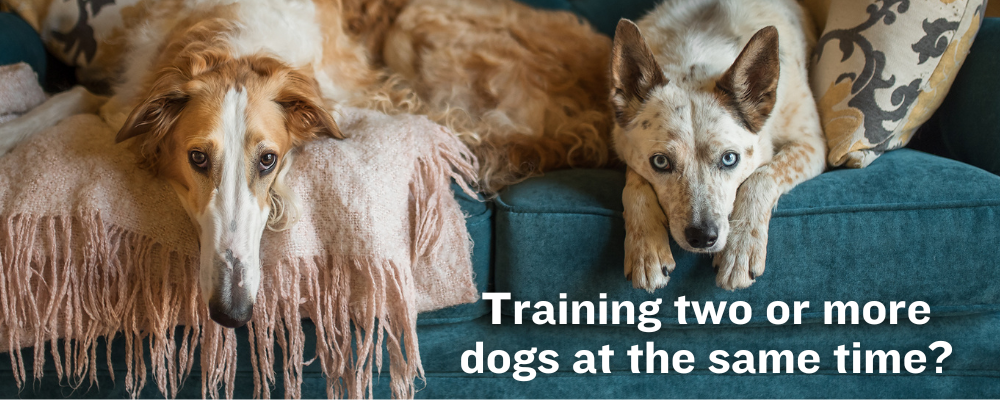This question might sound silly to some people (e.g. GSD owners with cats all live peacefully in the house). Just because it has never happened to you does not mean it won’t happen.
It is not uncommon for a German Shepherd Dog to kill cats at home or next door that crosses into the yard, as they would do to other small animals like rats, squirrels, or rabbits. GSD will kill cats out of their prey drive when their natural instinct kicks in. But it can be prevented if your dog is trained properly.
In this article, we will take a closer look at some potential causes and tips on how to deal with the situation – to prevent this from happening. If you are a German Shepherd owner or an owner-to-be, with cats at home or at your neighbor’s, you might want to read on.
Understanding Dog’s Instincts
First thing first, dogs, like any other animals, do not kill out of rage or revenge.
Even though the action is outrageously horrible, it is really not the dog’s fault. They are predators by nature and it’s hardwired into their blood and their genes to physically attack for good reasons (in a dog’s view).
Let’s look into the dog’s mind to better understand the reason behind the act of killing:
Prey Drive
Prey drive is inherited in all carnivores, including dogs. It works to motivate them to hunt for food. While pet dogs rarely need to prey on other animals, this instinct remains in their trait.
Their target is usually a small animal, such as a cat, frog, squirrel or bird, but some GSD owners reported their dog will hunt deer.
What fires a dog’s prey drive is movement. Sudden and quick movement triggers a reflexive response in dogs. If your dog sees a running cat, his prey drive could have triggered him to chase.
Protective Instinct
A dog’s natural instinct is to protect its owner and family. A roaming cat in your backyard is considered by your dog as an intruder into his territory. He is bound to protect as a dog would do.
Of course, some breeds, like German Shepherds, are known to be more protective than the others.
Watch how a GSD claims his bed from a cat in action:
Moral Boundaries
Unlike humans, dogs do not have moral boundaries to tell them killing is an act of evil.
If your dog started chasing after a fleeing cat and ended up fatally wounding the cat, you have to accept that your dog is only acting out of their basic instants – it is totally normal behavior.
Just as killing mice may be part of being a cat.
Why do German Shepherds kill cats?
There may be many different causes for a dog to kill a cat. Let’s take a closer look:
1. Your German Shepherd has a strong prey drive
Prey drive is hard-wired into their blood. And usually follows a sequence of behavior – searching, stalking, chasing, grab-biting, and kill-biting.
Thus, a German Shepherd with a strong prey drive will chase and may eventually kill small animals, including chickens.
2. Your German Shepherd reacts to its natural instinct
German Shepherds, if not properly trained, may chase every moving object, like cats, birds, rabbits, or squirrels. He is just being a dog.
Chasing doesn’t apply to cats alone.
They chase other running animals as a natural instinct as well. It just happens to be a running cat across the living room or in the backyard. And your German Shepherd is acting out of his instinct to chase.
3. Your German Shepherd is bored
German Shepherds are working dogs. If there’s no work to do, they look for work or things to entertain themselves.
If you’re unable to spend enough time to exercise or play with your dog, then they’ll find a way to play with others. Your cats, for example.
This could be the reason for your dog’s going after your cat(s). And chances are things have gotten out of hand.
4. Your German Shepherd is doing his guarding job
You should be proud. German Shepherds are one of the best guarding dogs in the world.
Your neighbor’s roaming cat in your backyard is seen by your GSD as an intruder to his owner’s property. Your German Shepherd is only doing his job to protect your home and family.
5. Your German Shepherd may feel unwell
Injury and illness are common reasons for a tame dog to show aggressiveness all of sudden.
Did the cat come too close to your dog’s food? Did the cat stray across your dog’s property?
If your GSD isn’t feeling well or is in pain, she may not even want to be approached or touched by his cat pal.
You should be alert of any change of behavior in your furry friend, including lack of appetite, weight loss, or sudden aggression. If in doubt, consult a vet.
How to prevent your german shepherd from killing cats?
Just because it’s hard-wired into their blood does not mean that it cannot be prevented with proper training. Here are some common ways to teach your German Shepherd good manners among cats.
1. Socialize, Socialize and Socialize
Early socialization can get your German Shepherd used to having cats around.
It is advised to start by the time your pup reaches about four months old. Your puppy should be able to meet other animals and humans comfortably.
However, these introductions must be in a controlled environment. Don’t force your dog if they don’t feel like it.
Early socialization can help you access whether it’s time for your German Shepherd is ready to meet cats without problems.
The earlier you start socializing your dog with cats, the less likely will your dog see your cat as a threat.
2. Say “Leave it” to chasing
Teach your German Shepherd that chasing a cat is not acceptable. Whenever your dog starts to chase a cat or anything that moves quickly, just say “leave it” gently.
Let your dog understand they will not be rewarded unless they listen to your commend. This can be achieved with a simple redirection coming next.
Learn more from Zak George’s video here:
3. Apply “redirection”
Every time you notice your German Shepherd looking at your cat, redirect his attention immediately before he even has a chance to start chasing.
Call out your dog’s name to put his focus on you. Reward with a treat.
It means you are teaching your dog to redirect his focus on other things other than the cat.
4. Practice “animal-distancing”
Introduce your German Shepherd to your house cat at a distance that is comfortable for her. Most people would set up a baby gate for this purpose.
Make sure the cat is visible to your dog, so he can observe the habit and movement of your cat. And the goal is to let him get used to having a cat around.
If your GSD barks at your cat, you should do the “redirection” and teach her to be gentle with your cat.
5. Introduce your German Shepherd to your cat under your supervision
Just as you wouldn’t let your German Shepherd greet an infant or child by himself, you should make sure your dog is ready to meet each other.
This can be done with the following steps:
| How to Introduce Your German Shepherd to Your Cat? |
|---|
| Stage 1 1. Put your dog inside the crate and give them his favorite toys 2. Let your cat in the room by herself 3. Observe their body language 4. Reward your dog for being calm with a treat Do this in brief sessions at first and gradually increase the duration of the sessions. The idea here is to make them feel safe around each other. Only proceed to the next stage when they are ready. If your GSD barks at the cat from his crate, apply “redirection” and tell him he needs to calm down and be gentle to cats in a soft voice. (I personally think GSD is smart enough to pick up your tone.) Remember to be patient. It may take weeks to months depending on your home setting and the age of your pets. Stage 2 1. Put your dog on a leash 2. Let your cat in the room by herself, remember to let yourself relax (otherwise, your dog may pick up your signal and get tense) 3. Let your dogs and cat get close to each other naturally 4. Lengthen the sessions when they are comfortable being in the same room Again, reward your pup with praise and treats when they are calm. You want to reinforce this behavior and associate the experience of being with cats as a pleasant encounter. |
| Read more: Introducing Dogs to Cats by American Humans |
What to do if my German Shepherd kills a cat?
A dog with a record of chasing and killing a cat is very likely to do it again. Here’s what you should do to prevent it from happening again:
If your dog kills a cat at home, and you have other cats:
It’s important to distance them from now on. Keep your GSD and cat(s) in completely separated rooms to avoid any direct contact.
In circumstances where it is not possible, you may need to consider re-homing your dog or the cat.
If your dog kills your neighbor’s cat:
Chances are that someone is allowing their cats to roam your territory. And your GSD might happen to fatally injure your cat to guard against your home, which he sees as an intruder.
As long as your dog isn’t leaving your property and going to your neighbor’s to kill the cats, you or your GSD could not be blamed. You may be nice enough to offer compensation to show your condolences.
Seek professional help
If the above doesn’t work, you might want to hire a dog trainer.
Or if you are unsure, seek advice from a veterinary behaviorist if you can.
Further Questions
Do German Shepherds have a higher prey drive than other breeds of dogs?
German Shepherds were mainly bred as working or guard dogs. Their prey drive is less than dogs that were bred for hunting or herding.
Common herding breeds include Border Collies, Pitbulls, Terriers, Beagles, Greyhounds, Spaniels, and Pointers.
Can the aggressiveness toward cats turn to kids at home?
Killing a cat doesn’t necessarily mean the dog would hurt a person, a child, or another dog even though this behavior may indicate the dog is at risk for such problems.
Yet, dogs may be overstimulated by fast-running children or high-pitched screaming (excited playing).
No matter how tame you think your German Shepherd is among kids, you should always practice caution and NEVER EVER EVER leave kids (of your own or visitor’s) play with your German Shepherd unsupervised.
Related post: Can a German Shepherd Dog Kill You? (With Stats and Real Cases)
Are my cats more likely to be killed if I have more than one dog at home?
In general, when dogs are in a pack, they may be more likely to act bold and reactive, compared to when they are alone. It could happen that one dog is playing with a cat and other dogs join in. Then prey drive instinct may kick in one dog and things get nasty afterward.
How to treat the remains of a dead cat?
There are two ways to treat the remains of a dead cat. You can call your local animal control. They usually have low-cost (or no-cost) services to dispose of deceased pets.
You can also call your veterinarian. You will need to bring your pet, ideally in a box or old blanket, to the clinic so they can arrange for disposal.
Final Thoughts
At the end of the day, dogs are only dogs and can only behave as instinct leads them to. Again, with proper training, this behavior can be changed.
Therefore, it is every pet parent’s full responsibility to ensure your pet’s safety and well-being! As many experienced GSD owners would advise you: Train your dog early on.



